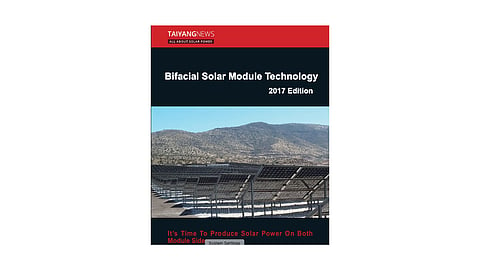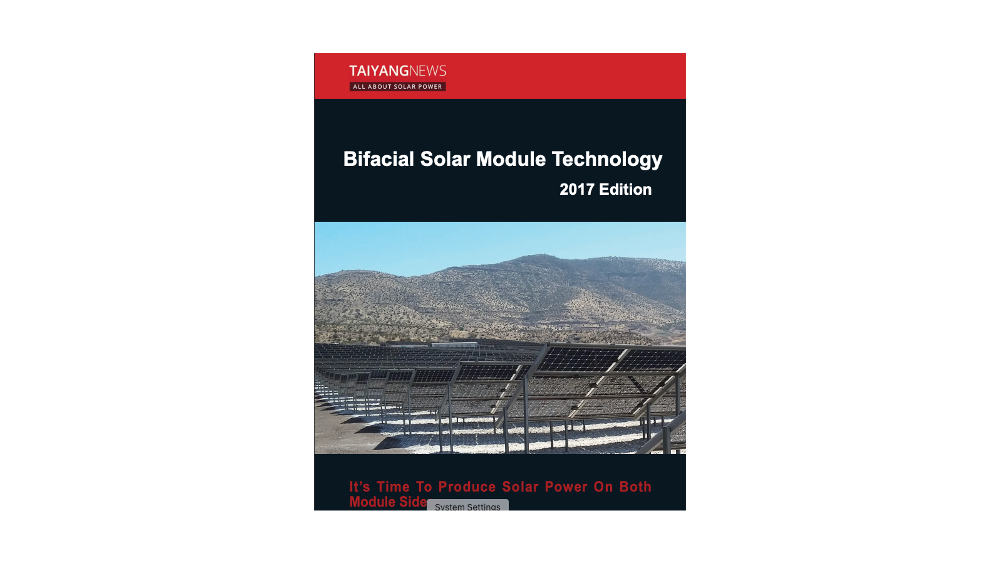TaiyangNews Bifacial Solar Report 2017
Bifacial PV is a simple but excellent concept that opens the usually barren rear side of the photovoltaic device for sunlight absorption. A typical bifacial cell, having metallic contacts on both sides, produces more power than standard cells in the same operation conditions. The power gain varies between 5 to 30%, depending on various aspects, such as device design, site albedo, mounting conditions and many more.
The beauty of the technology is that every advanced cell architecture can be easily tweaked to be bifacial. With many module makers trying to expand into glass-glass panels, solar modules are ready to go bifacial. The recent trend to PERC and the evaluation of other advance cell technologies further supports the move to bifacial technology.
The TaiyangNews 'Bifacial Solar Module Technology 2017' report looks at the different levels to go bifacial – cells, wafer, modules, and at the leading producers and equipment suppliers active in these segments as well as their technical solutions.
When going bifacial, the technical choice at the cell level is primarily among three commercial cell architectures – heterojunction (HJT), PERT and PERC. HJT, PERT and PERC have different levels of bifaciality. Most effective are HJT and PERT cells with a bifaciality of more than 90%, followed by IBC with a bifaciality of about 80%, while PERC is the least effective technology with about 70% bifaciality.
At the module level the change required for bifacial is primarily to replace the opaque backsheet with transparent material. With solar glass getting cheaper, glass-glass modules are becoming a mature product now. The glass-glass structure enables module makers to extend warranties of the module to 30 years, they open up rear side of the module for sunlight absorption. There is also efforts to push transparent backsheets for bifacial modules.
At the system level, there are several possibilities in order to get the maximum benefit from the bifacial system. As the rear side of the bifacial system relies on the installation site's albedo, in addition to selecting appropriate locations with natural high albedo, the ground reflection can also be increased artificially by putting reflective materials such as sand, gravel, white paint and sheets.
Three topics are always in the center of discussion for commercialization of a technology – bankability, standardization and power measurement/solar simulation. These have been also the teething problems for bifacial technology, but considerable progress has been reached for each of these aspects. Bankability is improving as the number of installations using bifacial PV has finally started to grow quickly and several tier 1 module producers having entered this field. An IEC standard to measure the IV characteristics of bifacial PV devices is in the final stages of approval. And the leading solar simulator suppliers have developed equipment for bifacial PV devices, which now allows manufacturers to measure these cells and modules in a mass production environment.
The TaiyangNews 'Bifacial Solar Module Technology 2017' report can be downloaded free of charge here.



